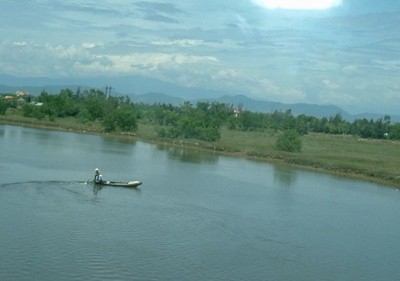(VOVworld) - Each region in Vietnam has its own typical folk songs. The land of Hồng Lam in Central Vietnam with its mountains and rivers, picturesque beauty, and brave, hardworking inhabitants has generated a folk culture rich in original national identity. On this week’s Sunday Show, we’ll introduce to you the beauty of Nghệ Tĩnh’s folk singing.
 |
| La River (Photo: Internet) |
Nghệ Tĩnh’s folk singing, also known as Ví Dặm singing, derived from spoken repartee while working and became popular throughout the central provinces. Ví Dặm singing is a unique kind of folk-song impossible to confuse with any other folk-songs. Its tunes are soft, melodious, and romantic. Meritorious Artist Hồng Lựu, Deputy Director of the Nghệ An Folk Singing Preservation and Development Center, has spent many years studying and collecting local folk songs. Lựu who is not only a talented artist but an excellent folk singer, comments on the art’s value ‘Each folk song is imbued with the character of some region in the Nghệ area. In fact, it is the soul, the personality of the people. As in other regions, Ví Dặm singing is composed by local people while doing farm work in the rice fields or doing something in between harvests. Ví Dặm songs include short and concise repartee. They’re restricted in terms of music, but their lyrics are diverse and profound’.
You just heard artists Bích Liên and Thái Hà singing a Ví Dặm song. Among the cultural treasures of Nghệ Tĩnh province, Hò singing - similar to barcarolle - is the most unique and the oldest. It began soon after people first started working collectively. Hò means to shout out either exclamations or songs while working with others. This kind of singing has two parts, one sung by a male vocalist and the other sung by the remainder of the group. As Ho singing was born from working, it involves movements similar to the motions of labor. There’s also another kind of Ho singing related to festivities. Artist Luu says ‘While collecting and putting Nghệ Tĩnh’s folk songs on stage, along with folk music researchers, I realize that Nghệ’s folk songs have more than two kinds of melodies, Ví, Dặm and Hò singing. Hò itself is sung in various ways. Hò singing in Ha Tinh is a bit different to Nghệ An while singing Hò while rowing is different to singing on the road…as an example:…. (insert). But when they travel by road, they can also sing Hò in different ways, you should pay attention to the rhythm. Listen, a piece of Hò singing on the road ……(insert). Singing Ho while in a boat or going on the river is different…(insert…)’.
Vi singing is part of Nghệ Tĩnh’s folk singing, but only has one kind of melody and what makes it special to me is that it depends on the singers’ state of mind. Meanwhile, Dặm singing, – singing while stamping one’s foot like people rowing - is said to be the most typical of in Nghệ Tĩnh. There are two types of Dặm singing – one is between males and females while the other is ‘Hát Dặm vè’. In the lyrics of a Dặm song, each line uses only 5 words and the fifth line is a repeat of the previous line. Sometimes, a Dặm song is a variant 7 or 8-word sentences. ‘Hát Dặm vè’ is often about stories that are told directly or with les imagination. The satirical singing is an excellent way to educate, and criticize society’s bad habits, but it also praises good examples…
Despite worries about the singing falling in oblivion and becoming lost of the singing, recently, the music has been becoming more popular. This is attributed to local cultural authorities being aware of the need to preserve and adapt the current Ví and Dặm folk-songs themselves. Yet, some say that as the art belongs to working people, they should be invited to participate in the preservation and development process, according to artist Hồng Lựu ‘Truly, folk singing is created by and belongs to the people so it needs to be brought back to the people, to the place where it was born. Local, provincial and central cultural leaders need to draw up specific policies to develop public art in each locality. Today’s rural communities are very different to those in the past’.
Ms. Lựu noted that one of the best ways of preserving and developing Nghệ’s folk singing, is to create cultural spaces. There, amongst the banyan trees in the communal house yard, village festivals and repartee singing contests be held along with folk games or conical hat making and weaving competitions. For years, Dặm singing has been closely linked to traditional craft villages and guilds.
You’ve been listening to a Hò melody featuring central people welcoming those from the north and south of the country on VOV’s Sunday Show. In this week’s edition, we’ve been talking about Nghệ Tĩnh’s folk singing. That’s our show for today. Let’s meet again next Sunday for another edition of the Sunday Show on the Voice of Vietnam. I’m.......thanks for joining us. Bye-bye!